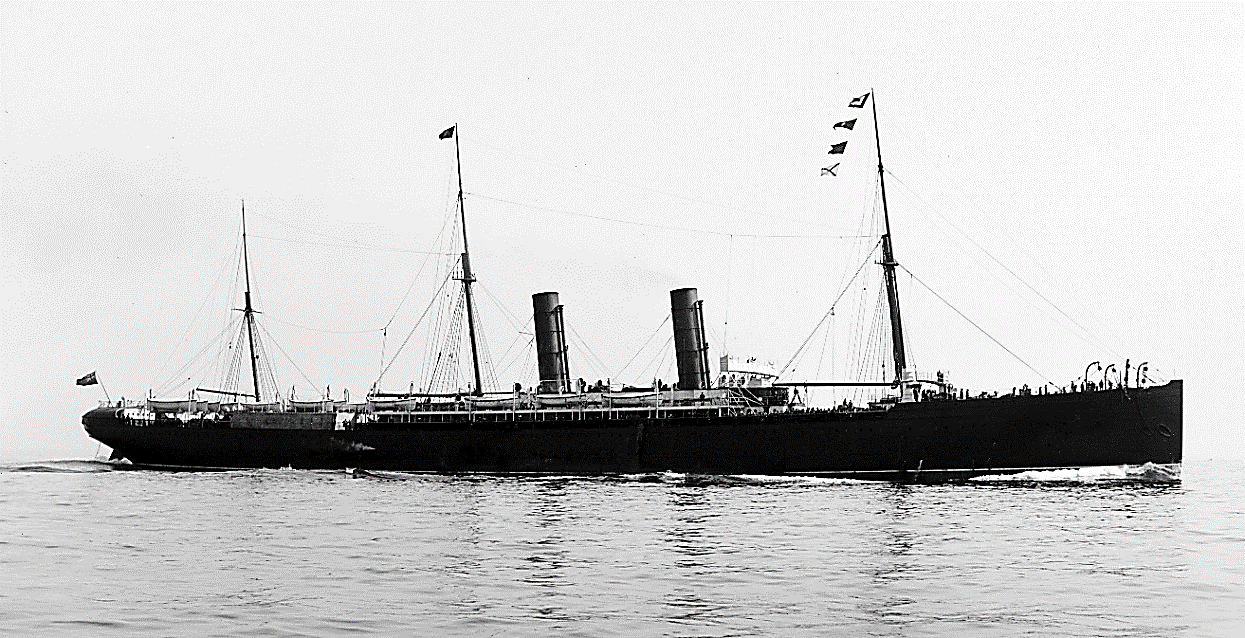The History of the Cunard Line 1830-1884
Sir Samuel Cunard, 1st Baronet (1787–1865)
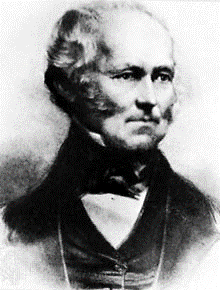
Samuel Cunard was born on 21 November 1787 in Halifax, Nova Scotia, raised as a Quaker and an Irish Catholic. In his teens, he manged his own general store and assisted his father with the family business of timber and investments into shipping. He was a highly successful entrepreneur in Halifax and had a great influence over the affairs of Nova Scotia.
Samuel Cunard was a founding director of the Halifax Steamboat Company which experimented with steam and built the SS Sir Charles Ogle for the Halifax-Dartmouth Ferry Service in 1830.
In 1831, he organised a joint venture between Halifax and Québec investors to build the Royal William, to serve the Québec and Halifax route. During this project, he learned much of steamships and their operations.
The Pochohontas was commissioned by Samuel Cunard for mail service to Prince Edward Island in 1832, and later accompanied by Cape Breton after the service was expanded.
In 1836, Samuel Cunard became President of the Halifax Steamboat Company and build a second ferry, the Boxer. With the development of the rail network, he envisaged a fleet of transatlantic ships crossing as often as trains.
In February 1839, Samuel Cunard visited England to offer a tender to the British Government to run a transatlantic mail service between England and North America. On 11 February 1840, he made an agreement with the Admiralty to provide three steamships by 1 May 1840, for an annual sum of £55,000.
Even though Samuel Cunard signed the agreement, he had no financial backing or even a ship builder to fulfil the contract so he consulted James C Melvill, Secretary of the East India Company for recommendations. Melvill recommended Robert Napier, an eminent Scottish engineer and shipbuilder, who had designed and built engines for 14 ships.
In March 1839, he met Napier and they discussed the ships to be built and the costs. Robert Napier provided a quote for an 800 ton ship to cost between £40 and £42 per ton. Samuel Cunard negotiated £30,000 per ship of identical specification and Napier agreed.
The British and North American Royal Mail Steam-Packet Company
In 1840, The British and North American Royal Mail Steam-Packet Company was set up with a capital of £270,000. Samuel Cunard invested £55000, Napier invested £6000, George Burns invested £5500, David MacIver and Charles MacIver each invested £4000 into the company. The remaining finance was made by 32 businessmen shareholders, who raised 75% of the capital.
On 16 May 1840, their first charted ship, the coastal paddle steamer, Unicorn, began service on the Halifax-Pictou-Québec route under Captain William Douglas. She was built by Robert Steel & Son, Greenock in 1838 and was 185 feet long with a beam of 23.6 feet with 45.3 feet over her paddle-boxes. She had a gross tonnage of 648.
She was powered by a two cylinder engine and could achieve speeds up to 9.5 knots. She could carry 40 passengers and a crew of 35. As she reached Boston on 3 June 1840, a gun salute greeted her and blew out some of her cabin windows.
In 1840, the majority of the world's transcontinental sea trade was still being carried on sailing ships. Sail ships were seen to be more reliable than steamships whose routes followed coast lines.
Four ships were needed to fulfil the mail agreement; the Britannia, the Acadia, the Caledonia and the Columbia. The Britannia was the first ship to serve on the transatlantic route and was a true pioneer. She was a wooden paddle steamer with a two-cylinder side-lever engine designed by Robert Napier which could average a speed of 9 knots. She was 207 feet long with a beam of 57 feet and had a gross tonnage of 1154. The Britannia could carry 115 passengers and 225 tons of cargo. The size of these ships were dwarfed in comparison with ships built sixty or more years later. The Britannia was the same size as the main restaurant in the Queen Mary (1936), and as the foredeck of the Queen Elizabeth (1940).
Before she was completed, estimates were calculated how much she would cost to run annually. Coal had to be transported from the South Wales coalfields in England to Boston and cost 20s a ton whereas in Liverpool it cost 8s a ton. Coal costs in the USA reduced once coal was discovered there. It was calculated that 6,960 tons of coal a year would be burned, that repairs would cost £2,000; £700 lighterage, dock dues and pilotage, £500 dock labour and a reserved £100 for advertising.
On 4 July 1840, American Independence Day, with Samuel Cunard as a passenger, the Britannia left Liverpool for Halifax and Boston on her maiden voyage. The voyage took twelve days and ten hours after which she arrived in Boston to a tumultuous welcome.
The British and North American Royal Mail Steam-Packet Company started successfully and within ten years its fleet had doubled. The frequency of sailings increased to once a week and a service to New York was added.
In 1847, the British Admiralty agreed to an increased mail subsidy of £156,000 a year. It was a great achievement for the company. During the year, Samuel Cunard and his family moved to London.
Several factors all worked together in Cunard’s favour: Atlantic trade was thriving, soon boosted with the California gold rush in 1848, the repeal of the restrictive Navigation Laws in 1849, and the economic growth of America itself. Between 1815 and 1845, 1½ million emigrants entered the United States. Between 1845 and 1865, there were 2½ million emigrants who wanted a quick passage on a ship. Competition had grown for the transatlantic route. In 1852, the Inman Line introduced a regular service for emigrants and by 1860 were carrying around 16,000 passengers each year. The American shipping company, Collins Line (The New York & Liverpool United States' Mail Steamship Company), had built ships for speed and were faster than their rivals. However, Cunard was perhaps not very responsive to change or passenger innovation and safety remained his overriding priority and even when Cunard built the Andes and the Alps, speed was not a factor in their design.
Ship building and design had changed; wooden hulls were being superseded from the early 1850s, paddlewheels in 1862 and the clipper bow modified in 1867. Iron hulls gave way to steel. Auxiliary sail remained because there was no absolute confidence in steam engines to satisfy all conditions of Atlantic weather. Wind was a backup.
The American authorities gave the Collins Line huge subsidies in 1852. However, the company did not financially recover from the loss of two of their steamers, the Arctic and the Pacific. In September 1854, the Arctic collided with the Vesta near Cape Race and sank. She carried 400 people: 250 passengers and 150 crew. Only 85 people survived (24 were male passengers). There were insufficient lifeboats to accommodate all the passengers and crew. Panic and disorder led to the lifeboats being filled by crew members who jumped in them leaving little room for passengers. 61 crew members were saved but no women or children survived. There was no official inquiry into the loss of the Arctic.
In late January 1856, the Pacific suddenly disappeared days before the Cunarder Persia set sail on her maiden voyage. Following these losses, the Collins Line collapsed in February 1858.
The Persia was constructed entirely by Messrs. Robert Napier and Sons, Glasgow and launched on 25 July 1855. She was nearly twice the length of the Britannia: 398 feet long with a beam of 45 feet and carried three times as many passengers. The Persia had a gross tonnage of 3300. Her paddles were no less than 40 feet in diameter and she could average a speed of 14 knots (compared with the Britannia's 9 knots). Her engines were five times more powerful than the Britannia and she burned 150 tons of coal a day. The Persia could carry one ton of cargo to every six tons of coal, so in relation to their size, the paddlers did not pull their weight economically.
In 1856, the Persia gained the Blue Riband for the Cunard Line. The Blue Riband was an award given to any passenger liner in regular service which attained the fastest time in crossing the Atlantic. The Collins Line were previous winners of the Blue Riband. During the Crimean War (1853–1856), 11 Cunard ships for requisitioned for war service by the Admiralty as stipulated in their 1839 agreement with Samuel Cunard. They could transport 1200 troops per voyage. Following the Persia’s success, Cunard planned to build a sister ship, the Scotia, but construction was delayed following the demise of their main competitor, the Collins Line.
On 25 June 1861, the two masted Scotia was launched and her maiden voyage commenced on 10 May 1862. She was the second largest ship in the world, after the Great Eastern, being 400 feet long with a beam of 47 feet. The Scotia had a gross tonnage of 3871. Her two-cylinder side-lever engine consumed less coa1 (64 tons of coal per day). The propeller-driven ship was far cheaper to run: machinery was more compact which gave more valuable space for revenue earning cargo. Steerage accommodation for emigrant passengers began to appear in Cunard screw steamships and passenger cabins were built in the space previously occupied by paddle boxes.
In 1859, Samuel Cunard was knighted and made a Baronet by Queen Victoria.
In 1862, the Government announced that screw steamers could carry mail and so Cunard commissioned their first screw propelled ship, the China, which was launched on 8 October 1861 and commenced her maiden voyage on 15 March 1962. She was built and engineered by Robert Napier and was 326.2 feet long with a beam of 40 feet. The China was more economical than the Scotia because her engines burned 82 tons of coal per day. The Board of Trade recorded capacity for 268 First Class and 771 Second Class passengers. The China started servicing Cunard’s new route from Liverpool to New York via Halifax. By 1865, Cunard had 26 ships servicing the transatlantic routes.
In 1865, The British and North American Royal Mail Steam-Packet Company celebrated its 25th anniversary. On 28 April 1865, Sir Samuel Cunard died and was succeeded by Charles MacIver in running the company.
The size of Cunarders needed to increase. Passengers began to be offered greater comfort than they had previously received and became expectant of it. The Russia was launched on 20 March 1867. She was the first Cunarder that could match the speed of rival company paddle steamers.
In 1871, two years after its establishment, the White Star Line (WSL) introduced its “Oceanic class” ships that provided for a better standard of passenger accommodation. In retaliation, Cunard launched the Scythia and the Bothnia, both built by J. & G. Thomson & Co. (later to become John Brown & Co in 1899).
On 28 October 1874, The Scythia was launched. She was 420.8 feet long with a beam of 42.2 feet and had a gross tonnage of 4,557. The Bothnia was launched on 4 March 1874. She was 442.3 feet long with a beam of 42.2 feet and had a gross tonnage of 4,535. The design and construction of the two ships led to an increase in costs and a financial reorganisation in the company followed. Since 1840, the ownership of the company had been under the control of the founding three partners.
In 1878, the Cunard Steam Ship Company Limited was formed by McIver, Burns and the Cunard family. It was a joint stock company and had capital of' £2 million. £1.2 million was issued to the families of' Cunard, Burns and MacIver as part payment for the property. In 1880, the Cunard Line became a public company and the balance of the share capital was issued. The company’s prospectus explained the reasons why becoming a public company was necessary: “…the growing wants of the Company's transatlantic trade demand the acquisition of additional steam ships of great size and power, involving a cost for construction which may, best be met by a large public company.” The Servia was a single screw steamer built by J & G Thomson & Co in 1881. She was launched on 1 March 1881, and commenced her maiden voyage on 26 November 1881. The Servia was 515 feet long with a beam of 52.1 feet and had a gross tonnage of 7392. She had five decks and could accommodate 480 First Class with 202 staterooms, 600 Steerage passengers and 252 crew. The Servia was the first Cunarder to be built of steel and the first steamship in the world to incorporate the electric light. She was capable of a speed of 16 knots. This improved time performance. With size, power and speed all improved, the fast turn-arounds, meant only four ships would be needed to service the main Atlantic route.RMS Britannia (1840)
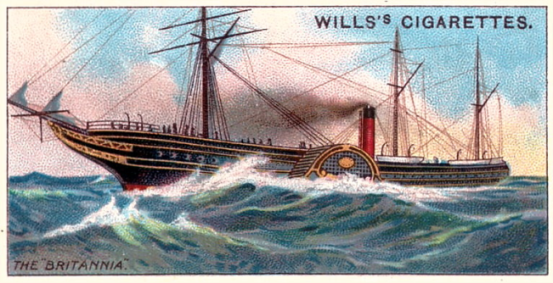
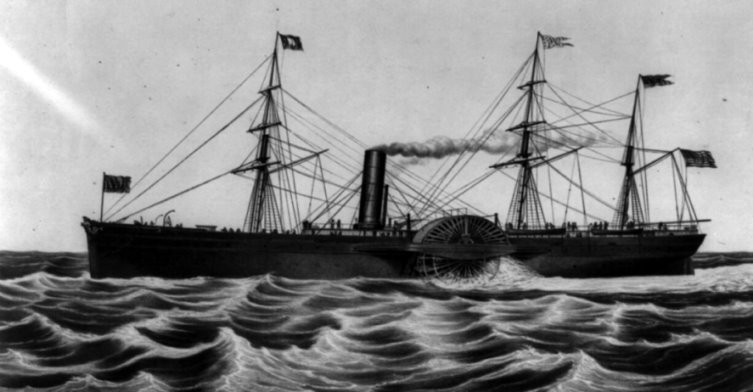
RMS Persia (1855)
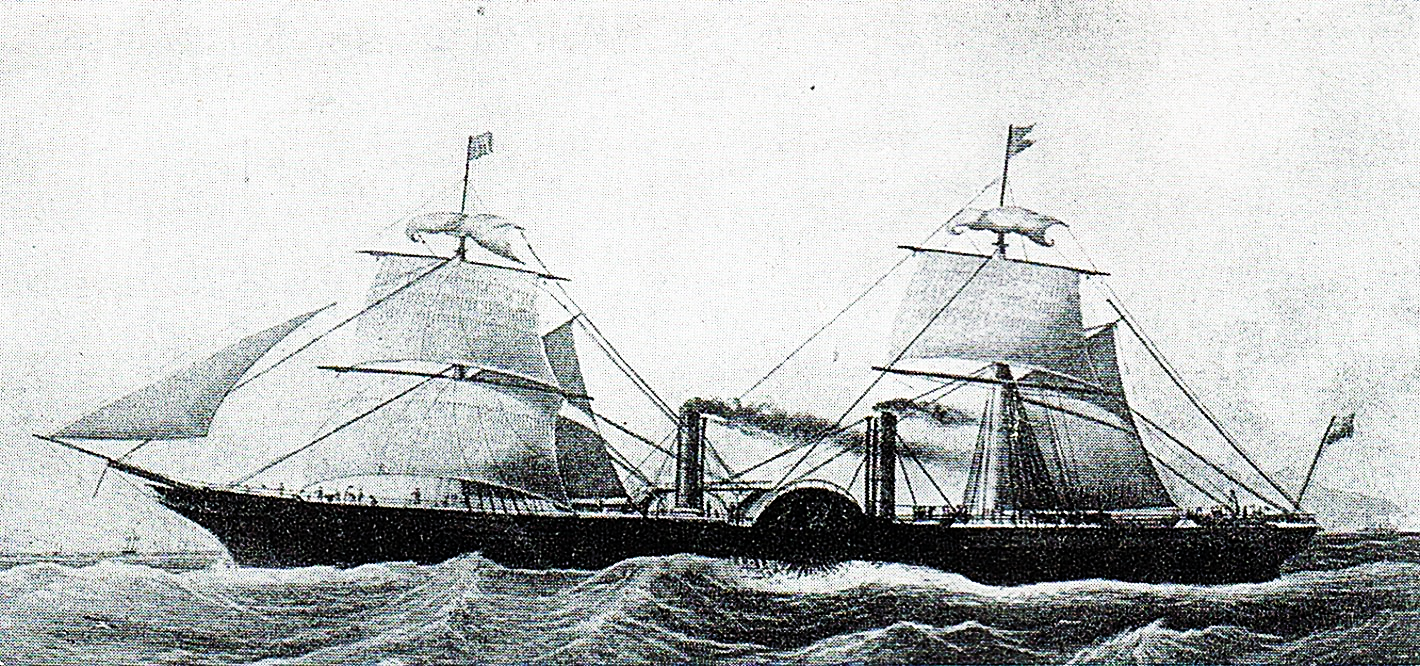
SS Scotia (1862)
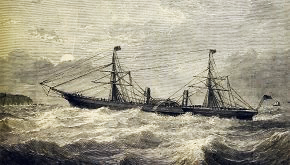
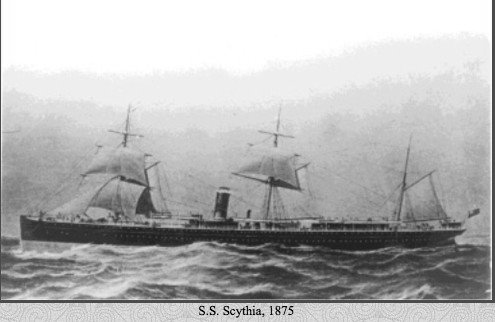
RMS Servia (1881)
